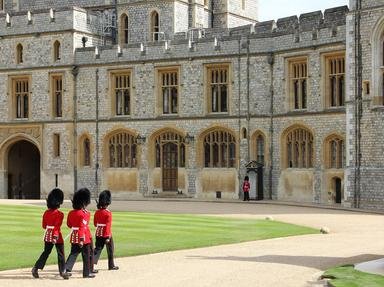
Sort Your Eds Out Trivia Quiz
From their nicknames or titles and their parentage can you place these King Edwards of England and the UK into the order that they reigned?
An ordering quiz
by Snowman.
Estimated time: 3 mins.

| What's the Correct Order? | Choices |
| 1. (Earliest reign 899-924 AD) | Edward, Earl of Pembroke. Son of Edward and Elizabeth Woodville. Presumed murdered aged 12. |
| 2. (Reigned 975-978) | Edward (David), Duke of Windsor. Son of George and Mary of Teck. Abdicated for love. |
| 3. (Reigned 1042-1066) | Edward the Confessor. Son of Aethelred and Emma. Built Westminster Abbey. |
| 4. (Reigned 1272-1307) | Edward, Earl of March. Son of Richard Plantagenet and Cecily Neville. Swapped the throne with Henry VI. |
| 5. (Reigned 1307-1327) | Edward Longshanks. Son of Henry and Eleanor of Provence. Hammer of the Scots. |
| 6. (Reigned 1327-1377) | Edward the Elder. Son of Alfred the Great and Ealhswith. Fought off the Vikings in the north. |
| 7. (Reigned 1461-70 and 1471-83) | Edward the Pious. Son of Henry and Jane Seymour. First king raised a Protestant. |
| 8. (Reigned 1483) | Edward of Windsor. Son of Edward and Isabella of France. Started the Hundred Years' War |
| 9. (Reigned 1547-1553) | Edward the Martyr. Son of Edgar and Wulfthryth. Presumed murdered aged 16. |
| 10. (Reigned 1901-1910) | Edward (Bertie), Duke of Rothesay. Son of Victoria and Albert. Edwardian era named for him. |
| 11. (Reigned Jan-Dec 1936) | Edward of Caernarfon. Son of Edward and Eleanor, Countess of Ponthieu. Abdicated and died in captivity. |